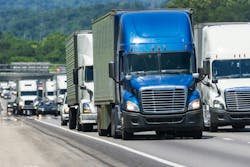Zero Emissions Trucking Challenges
A report, Approaching Zero Emission Trucking: Challenges and Opportunities. released earlier this month from the MIT Center for Transportation & Logistics (CTL) based on a roundtable earlier this year by the MIT FreightLab and the MIT Sustainable Supply Chain Lab, discusess identifying, measuring, and managing Scope 3 emissions; emission-reduction strategies, including zero-emission (ZE) trucking solutions.
The key takeaways from the report are as follows.
There is no one-size-fits-all solution or “silver bullet” for reducing emissions in the trucking industry.
Battery-electric trucks are seen as a promising technology for certain applications, such as last-mile delivery and short-haul trucking. However, other options, such as renewable diesel, biodiesel, renewable natural gas, and hydrogen fuel cells, may be more appropriate for other use cases. Improved operational efficiency has a role to play too. The government’s dominant focus on battery-electric trucks was viewed as overly restrictive and in some cases counterproductive. Other bridging or transition technologies that would greatly reduce emissions with minimal economic impact should play a role.
There is a need for greater standardization in how emissions, mainly Scope 3, are measured, allocated, and reported.
The lack of a reliable standardized methodology makes it challenging for companies to determine not just what to measure but also how to do it. This creates doubts about the accuracy of the reported data. This lack of clarity also makes it difficult to compare emissions data across companies and to track progress over time. An additional challenge is how to determine the true economic value of emission-reduction efforts.
Risks and barriers to adoption and implementation are difficult and costly to overcome.
Corporate leaders often are reluctant to invest in the necessary equipment, technology, and personnel without a quantifiable ROI. And carriers that invest in expensive zero-emission (ZE) equipment and infrastructure are finding that even those customers who value—and even demand—lower-emission transportation aren’t willing to pay more for those services. The biggest holdup, though, is the lack of adequate charging infrastructure and utilities’ inability to provide it when trucking fleets need it. Solving these and other barriers to adoption will require collaboration among multiple stakeholders, including governments.
